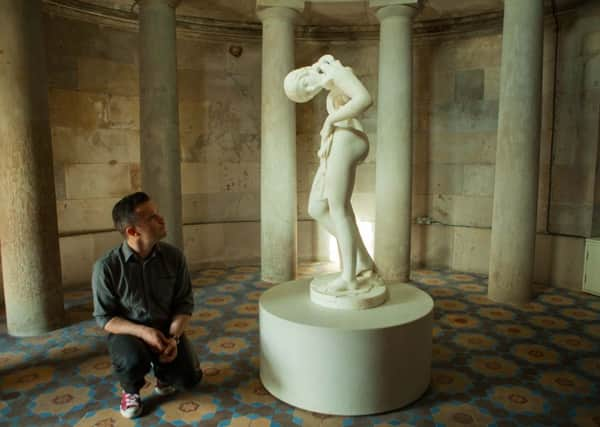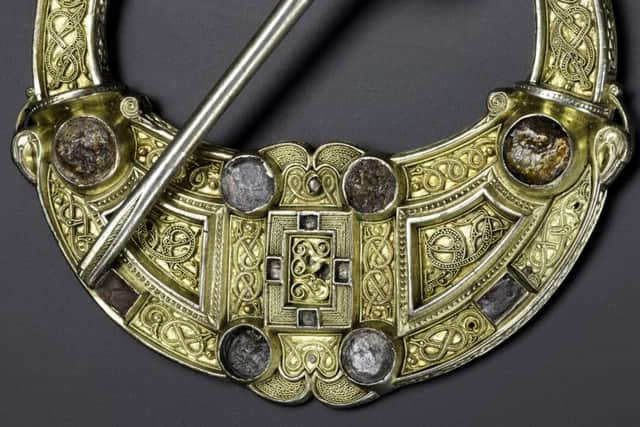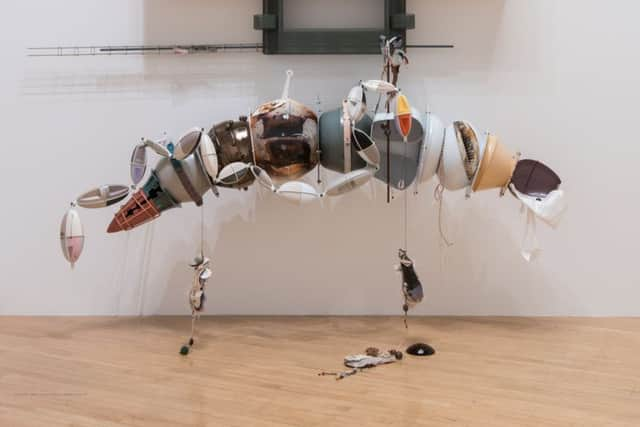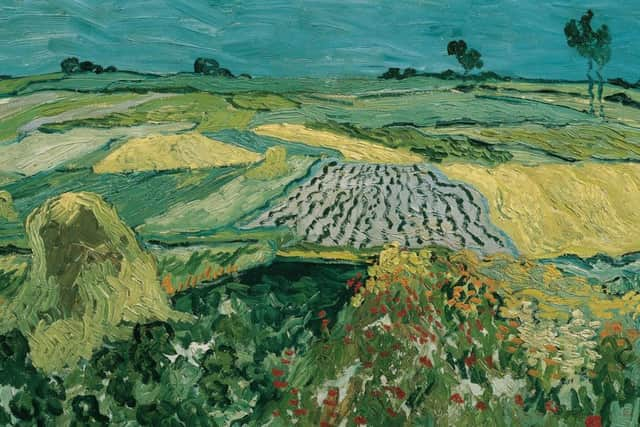The top ten art exhibitions of 2016


MARCH
Celts
National Museum of Scotland


Celts at the National Museum of Scotland was one of the biggest shows of the year. Wonderful treasures were brought from all over Europe. This immediately demonstrated how widespread the Celts once were, but displayed together these objects in many different forms also demonstrated how consistently
rich and fascinating their art was and how it endured over a thousand years and more. The Romans called the Celts barbarians and there is maybe still a small hangover from that attitude and correspondingly in reaction a certain defensiveness among the Celts. The art puts paid to all that. This show proved beyond dispute that the Celts were a highly sophisticated people and we have every reason to be proud of our origins. Duncan Macmillan (DM)
APRIL
Amie Siegel: Provenance


Glasgow International Festival
Advertisement
Hide AdAdvertisement
Hide AdSarah McCrory’s second Glasgow International Festival came out of the blocks fast, focused and largely female including an excellent show on industrial themes from Claire Barclay at the dusty Kelvin Hall. But the single work that has lasted longest in the memory for me is the American artist Amie Siegel’s film Provenance. The film focuses on the story of chairs designed by Le Corbusier, plucked from anonymous public service in India’s Chandigarh Capitol Complex and retooled as coveted luxury objects for the auction rooms of the US and superyachts of the filthy rich. A cautionary tale of asset stripping in what turned out to be the year that an oligarch took hold of the reins of state in the US.
Moira Jeffrey (MJ)
JUNE


Inspiring Impressionism: Daubigny, Monet, Van Gogh
Scottish National Gallery
We had had so many Impressionist-linked exhibitions at the National Gallery over the years that when Inspiring Impressionism: Daubigny, Monet, Van Gogh was announced, you did wonder if the subject was not getting a bit tired. But it proved to be a really fresh and illuminating show full of wonderful pictures. There were great landscapes by Daubigny himself and that was a discovery, but Monet wasn’t there just so his name could be in the title. There were great paintings by him and by the other Impressionists too and with a dozen wonderful Van Goghs, he was no mere token either, but a real star in a memorable show. DM
JULY


Simon Starling and Graham Eatough: At Twilight
The Common Guild, Glasgow
Over the hours of summer dusk at Holmwood House, this collaboration between Turner Prize winner Simon Starling and radical theatre maker Graham Eatough delivered a packed history of the avant-garde, a terrible lesson on the First World War and a beautiful live performance from Joshua Abrams’s band The Natural Information Society. As fleeting and timely as the dramatic sunset that formed its backdrop. MJ
JULY
I Still Believe in Miracles
Inverleith House, Edinburgh


The title of curator Paul Nesbitt’s summer survey show of 30 years of his programme at Inverleith House turned out to be a desperate plea for help when, in its closing days, the Royal Botanic Garden Edinburgh announced, quietly and cynically, that the gallery programme was at an end. Despite a marvellous community campaign and widespread political pressure, the story isn’t yet resolved. The issue is not just about one gallery, one curator, or indeed about the brilliant but fragile visual arts sector. It’s also about the endless restriction of public space in increasingly corporate Edinburgh and the failure of different disciplines to talk to each other with both respect and curiosity. MJ
JULY
William Gillies and John Maxwell
City Art Centre, Edinburgh
William Gillies and John Maxwell were close friends and often worked beside each other, but the show of their work at ECAC, drawn mostly from the Fletcher collection, brought out how different they were. Gillies was immensely productive, Maxwell was the opposite and what he did finish he too often destroyed. Gillies worked with the subject in front of him, Maxwell often painted his dreams. But both were pictorial poets if in different ways. This show demonstrated the real quality of their work and also how they complement each other; how indeed for all the difference between them, you could still see their friendship reflected in their pictures on the walls. DM
JULY
Jonathan Owen, More Lasting Than Bronze
Edinburgh Art Festival
The Edinburgh Art Festival has transformed from a loose coalition of galleries into a considerable artistic force thanks to director Sorcha Carey’s imaginative commissions, which have opened up the city’s hidden spaces. I had never been inside the Burns Monument on Waterloo Place before, but this tiny neoclassical temple proved the perfect setting for Jonathan Owen’s moving transformation of a 19th century marble statue of a nymph which he re-chiselled to reveal the chains within. MJ
OCTOBER
Ian Hamilton Finlay:
Early Works
Ingleby Gallery, Edinburgh
Ian Hamilton Finlay is rightly one
of the most celebrated modern Scottish artists and his work is in general familiar. Pictures of his garden at Little Sparta, for instance, are much reproduced. But how it
Advertisement
Hide AdAdvertisement
Hide Adall began is much less well known and was the subject of one of the year’s best shows, Ian Hamilton Finlay:
the early works 1958-1970, at the Ingleby Gallery. Really comprehensive, the exhibition brought together early publications of poems and short stories and showed how they evolved into concrete poetry and then in turn into his unique language of word and image, always created in collaboration as he worked with a range of artists and craftsmen and women. DM
OCTOBER
Helen Marten
Hepworth Prize for Sculpture, Wakefield and Turner Prize 2016, Tate Britain
I was surprised when 31 year-old Helen Marten won the inaugural Hepworth Prize for Sculpture this year, not because she’s no good but because I had hoped the prize would go to a senior nominee such as Phyllida Barlow or David Medalla for the longevity of their contribution. Marten’s Turner Prize, however, seems most apt. She is a distinctive, clever artist whose work speaks eloquently of the moment. Both her Turner show at Tate Britain and work at the Hepworth in Wakefield are well worth the trip. Her win also made politician and Brexiteer Michael Gove splutter with fogey outrage that her work was “modish crap”. Job done. MJ
DECEMBER
Joan Eardley: A Sense of Place
Scottish National Portrait Gallery, Edinburgh
The National Gallery put on a major Joan Eardley show in 2008. That doesn’t seem long ago, really, so
when Joan Eardley: A Sense of Place was announced as this year’s monograph exhibition of a Scottish artist, there seemed to be a risk that it would cover familiar ground. In the event, however, by focusing on the two places that Eardley did most of her best work, Townhead in Glasgow and Catterline on the north-east coast, the exhibition builds on the previous show. By doing so, it provides real insight into her work and a fresh sense of the striking originality of her marvellous paintings and indeed of her drawings too. DM